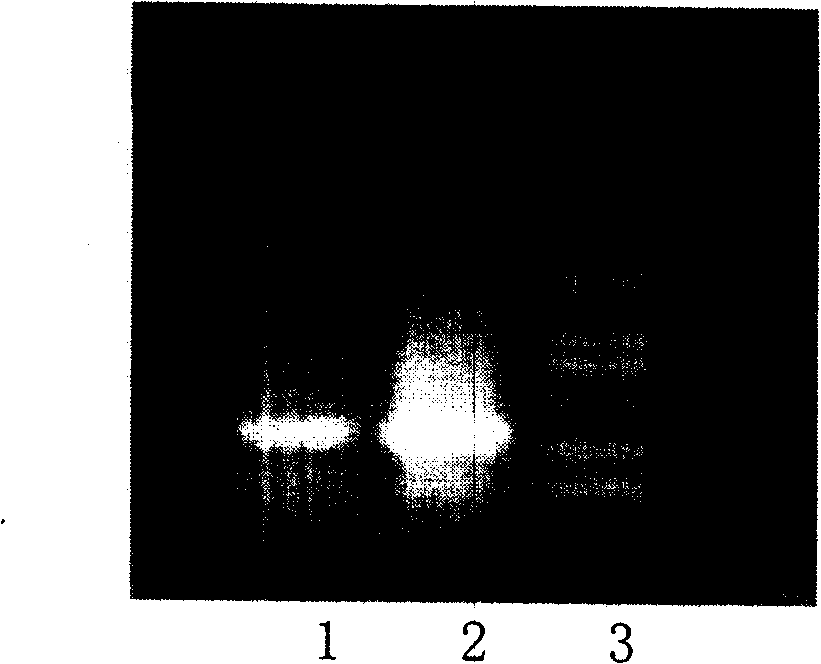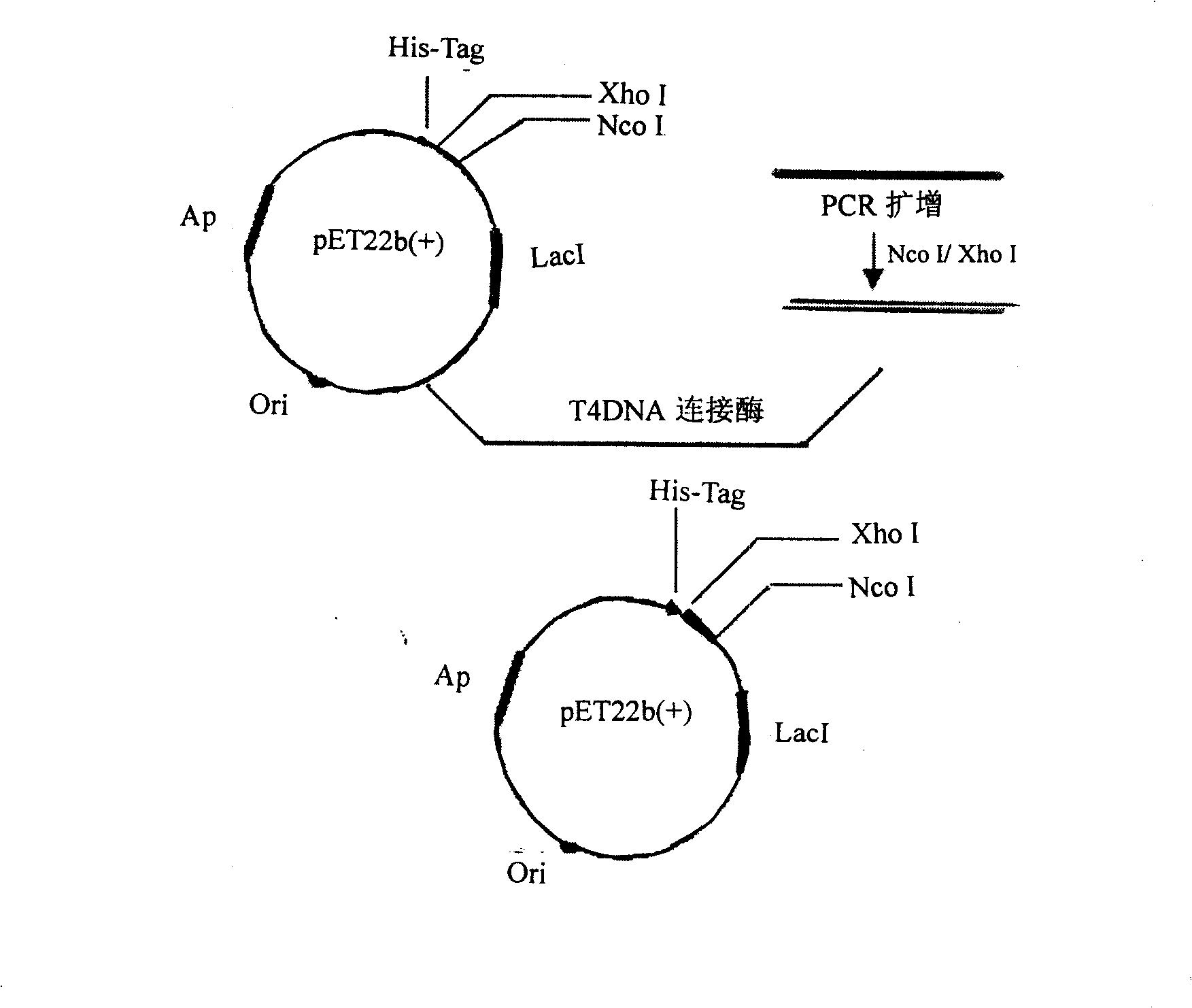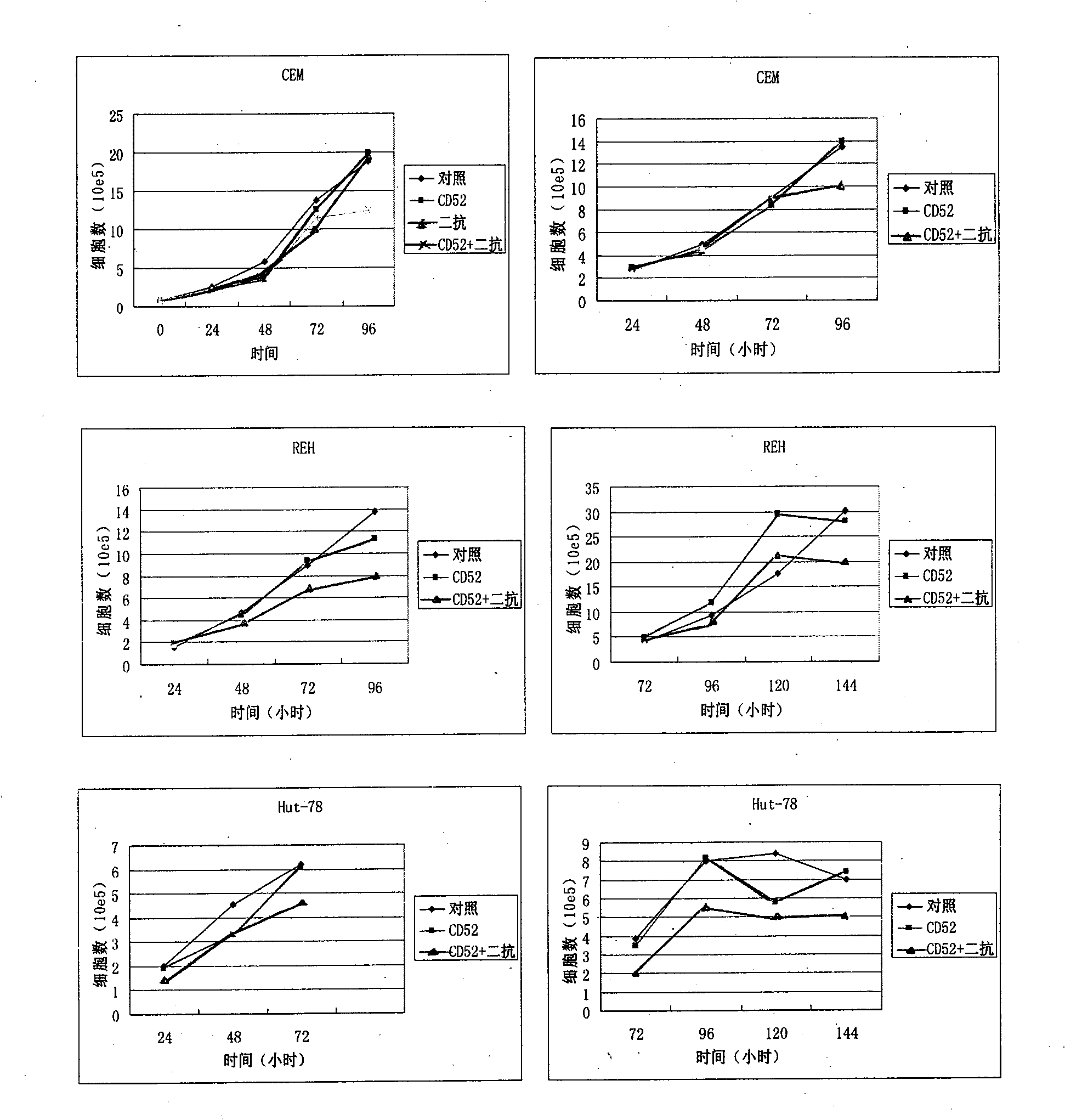Antihuman CD52 monoclonal antibody hybridoma cell line, monoclonal antibody, engineered antibody, carrier, reagent kit and application thereof
A monoclonal antibody and antibody technology, applied in the direction of anti-receptor/cell surface antigen/cell surface determinant immunoglobulin, antibody, fusion cell, etc. Damage and other problems, to achieve the effect of easy mass production, low antigenicity, and low production cost
- Summary
- Abstract
- Description
- Claims
- Application Information
AI Technical Summary
Problems solved by technology
Method used
Image
Examples
Embodiment 1
[0050] Example 1 Preparation and fluorescent labeling of mouse anti-human CD52 monoclonal antibody
[0051] Using isolated human tonsil cells as antigens, immunize 6-week-old Balb / c mice with conventional methods, and use Freund's complete adjuvant for the first basic immunization, and perform basic immunization every 3 weeks, a total of three times, 2×10 7 Cells per mouse per time, booster immunization by intrasplenic injection 3 weeks after the last basic immunization, 1×10 7 Cells / mouse; 3 days later, the spleen was taken, fused with NS1 mouse myeloma cells, and carried out according to the conventional hybridoma preparation method. After 12 days of fusion, the supernatant of fusion wells grown by monoclonal growth was collected, and CD52-positive target cell lines were selected for screening and identification by indirect immunofluorescence method. Hybridoma cells with good reactivity and good growth status were selected for subcloning, and stable secretion of anti-human ...
Embodiment 2
[0054] Example 2 Anti-human CD52 monoclonal antibody detection of CD52 expression on the cell surface of leukemia cell lines
[0055] Take well-grown REH cells and collect them by centrifugation, and prepare 1×10 cells with PBS 7 / ml, each 100 μl was added to a flow tube, one tube was added with PE-labeled CD52 antibody, and the other tube was added with PE-labeled mouse IgG1 isotype control, and reacted at room temperature for 20 minutes in the dark. Add about 2ml of PBS to wash once, centrifuge at 1000rpm for 10 minutes, discard the supernatant, add 300μl of PBS, and detect by flow cytometry (see Figure 11 ).
Embodiment 3
[0056] Example 3 Anti-human CD52 monoclonal antibody can effectively inhibit the growth of leukemia cell lines in vitro
[0057] Take a well-growing CD52-positive leukemia cell line and adjust it to 1×10 with RPMI1640 culture medium containing 20% FBS 5 / ml, add 100μl per well to a 96-well culture plate. Cells were divided into 4 groups. Control group 1: without adding any antibody; control group 2: adding 20 μg / ml goat anti-mouse secondary antibody; experimental group 1: adding 10 μg / ml Campath-1; experimental group 2: adding 10 μg / ml Campath-1 and 20 μg / ml ml goat anti-mouse secondary antibody. Place in a 37°C, 5% carbon dioxide incubator for 24-144 hours.
[0058] (1) Changes in cell morphology. After the leukemia cell line was co-cultured with HI186, it could obviously show a dispersed morphology, and no longer had the characteristics of aggregate growth. When HI186 acted alone or in combination with the second antibody, although the number of cells decreased to a c...
PUM
 Login to View More
Login to View More Abstract
Description
Claims
Application Information
 Login to View More
Login to View More - R&D
- Intellectual Property
- Life Sciences
- Materials
- Tech Scout
- Unparalleled Data Quality
- Higher Quality Content
- 60% Fewer Hallucinations
Browse by: Latest US Patents, China's latest patents, Technical Efficacy Thesaurus, Application Domain, Technology Topic, Popular Technical Reports.
© 2025 PatSnap. All rights reserved.Legal|Privacy policy|Modern Slavery Act Transparency Statement|Sitemap|About US| Contact US: help@patsnap.com



